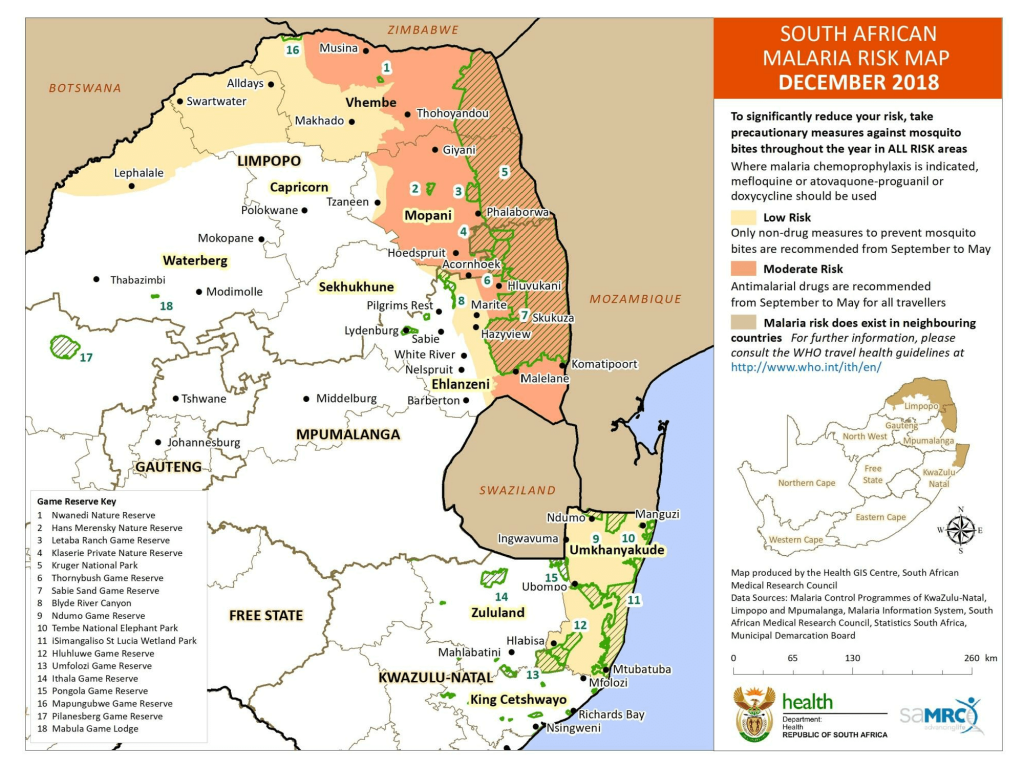- NATIONAL HELPLINE: 0800 012 322
- WHATSAPP NUMBER: 0600 123 456
- info@health.gov.za
At least 3.2 billion of the world’s people are still at risk of contracting malaria, and an estimated 350-500 million clinical malaria cases occur annually. More than 600,000 malaria deaths occur in Africa and most are children under 5 years of age. Around 60% of these clinical cases, and about 80% of malaria deaths, occur in sub-Saharan Africa. Malaria constitutes a major barrier to social and economic development in the region.
In South Africa, malaria is mainly transmitted along the border areas. Some parts of South Africa’s nine provinces (Limpopo, Mpumalanga and KwaZulu-Natal) are endemic for malaria, and 10% of the population (approximately 4.9 million persons) is at risk of contracting the disease. Malaria transmission in South Africa is seasonal, with malaria cases starting to rise in October, peaking in January and February, and waning towards May.

The South African government is working to eliminate malaria. Malaria elimination involves a systematic process of developing strategies and ensuring their robust implementation. The first phase of elimination commenced with a programme review, the development of an elimination strategy, an implementation plan, and a monitoring and evaluation plan. The second phase, currently underway, will involve the robust implementation of the interventions detailed in the strategic plan, and monitoring its progress towards achieving the goal of malaria elimination.
Malaria is a preventable and curable disease. If not diagnosed and treated early, it can also be fatal. Preventative and curative advice can be found under Malaria Prevention & Treatment Advice.
Aids Helpline
Mental Health Information Line
Children’s Cancer Helpline
National Health System Ethics Line